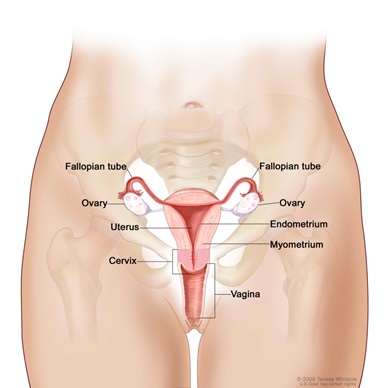It’s no surprise that the vagina is still an alien concept to most men, even to the most sexually active. It’s surprising, however, to note that even a lot of females are still not familiar with their own vagina anatomy. For most women, it’s just their ‘thing’ down there. It’s fondly called by many names—pussy, beaver, cunt, the bearded clam, cootch, snatch, vajayjay and other terms. If they just looked closely (or read a few books), people (both men and women) will realize that the vagina is one of nature’s great works. You wouldn’t be alive without one. Below are some of the important parts of the vagina:
The Exterior
This part is what is readily seen by you (or by other people, if they’re lucky enough). The exterior part of the vagina is called the Vulva. Look closer and you’ll see that there are actually two folds. These folds are called the Labia and has two parts—the Labia Majora (the outer vulva) and the Labia Minora (the inner part).
Think of the labia majora as the protective covering of your vagina. They contain fatty tissue that protects the clitoris (more on this pleasure spot later) and the vagina. The labia minora is the inner (and thinner) set of lips and they’re loaded with blood vessels, nerve endings and glands. The glands, along with the Bartholin’s glands located deeper in the labia minora, actually release secretions for lubrication.
The Clitoris
The Clitoris, or clit, is the “Holy Grail” for most high school boys. Rightly so because this little nub found at the top part of the labia minora (hidden behind the clitoral hood) is what causes women to orgasm (with the right amount of stimulation, of course). This little button of pleasure is packed with nerve endings that’s why it’s so sensitive to the touch. What’s visible is only is the head of the clitoris, but it actually has parts that are hidden.
The Interior
The elusive G-Spot is hidden inside the vaginal canal and it takes a more enterprising approach to find it. But the G-Spot is another sensitive area that can produce powerful orgasms. For the eager fingers, the G-Spot is located two inches into the anterior wall of the vagina.
Making up the rest of the vagina cast is the vaginal canal, the cervix, the uterus and the is tube (you can include the hymen for virgins). The vaginal canal is the expanse of vaginal real estate stretching from the vaginal opening to the cervix.
The cervix serves as the opening to the uterus. It has some mucus to protect itself from infection and can vary in size depending upon the menstrual cycle. During ovulation, this mucous provides the passage of the sperm.
The uterus, or also called the womb, is the main facility of the woman’s reproductive organ. This is where the unborn baby resides before it is born. The uterus is lined with what is called the endometrium. This lining is shed and comes out as blood if ever no fertilized egg attaches itself to it. This is what happens when women menstruate.
The Fallopian tube and the ovaries complete the system. The ovaries contain the egg cell that merges with the sperm cell to form human life. These ovaries typically release an egg once a month (or once in 28 days, to be more precise). The Fallopian Tubes, on the other hand, gathers up the egg cell where it passes through the tube on its way to the uterus.
Read closely and learn about the internal workings of the vagina. Find out if you already know your (or your lady’s) vajayjay. The vagina is not just for procreation, it’s an important system in every woman’s body. Everyone should have a clear understanding of the vagina anatomy for a healthier lifestyle.
